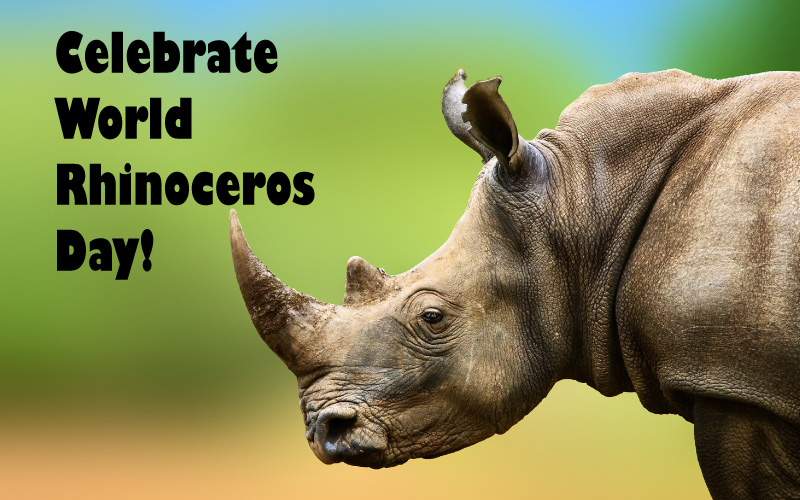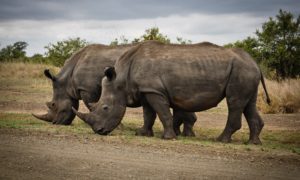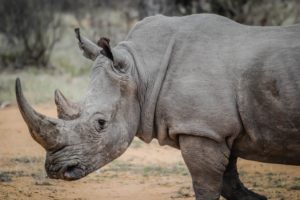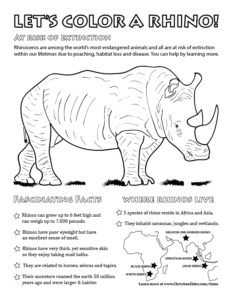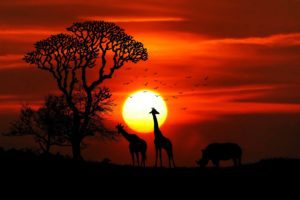It’s World Rhinoceros Day!
World Rhinoceros Day is celebrated on September 22 each year. Below you’ll learn some interesting facts about rhinos and also learn how to sketch them in my video workshops below!
The Rhinoceros family includes five species native to Africa and Southern Asia.The Black, Javan, and Sumatran rhinos as critically endangered. The Greater One-Horned Rhino is vulnerable, and the White Rhino is near threatened. Their closest living relatives are tapirs and horses.
They are some of the largest (and oldest) remaining terrestrial animals in the world. Often exceeding a ton, they have thick, tough skin, and typically one to two horns. Rhinos are herbivores, subsisting mainly on leaves, but have the very interesting ability to ferment food in their hindgut. This allows the rhino to consume more fibrous plant matter as needed.
Conservation Challenges
Let’s take a moment to learn about these impressive animals and the threats they face. Rhinoceros are at risk of extinction throughout their range, especially from poachers who hunt them for their horn with the false belief that it has medicinal qualities.
Young rhinos are vulnerable to hyenas, crocodiles, big cats, and African wild dogs. However, the only real predators of adult rhinos, are humans. Rhinos are killed for their horns which are then sold on the black market. They’re mainly used in traditional medicine, especially in East Asia where they’re valued as highly as gold. In Vietnamese medicine, the horns are ground and consumed for their supposed therapeutic properties.
Daily visits to water holes for drinking make the rhinoceros an easy target for poachers. It’s been reported that only about 3% of poachers are successfully stopped in Zimbabwe. South African National Parks reported that over 1,338 rhinos were killed in South Africa in 2015. In Namibia, rhino trophy hunting remains legal, where hunting licenses can be purchased as a means of raising money for conservation, despite the contradictory nature of this thinking. Along with poaching, loss of habitat also threatens the survival of the rhinos, as their populations continue to plummet.
Efforts are being made to stop poachers, including armed park rangers and even sedating the rhinos and infusing their horns with substances that are harmless to the rhino, but poisonous to humans when consumed. Many organizations (like those listed at the bottom of this page) are among those working to ensure the remaining rhino populations don’t disappear. But despite these efforts, rhinos are still facing a high chance of extinction and need our help.
Discover and Sketch Black Rhinos
In celebration of World Rhinoceros Day, watch the video below in which I lead you in a step-by-step drawing demonstration of both Black Rhinos and White Rhinos. To participate all you need is a pencil, no drawing talent is required! You can download your Rhino Cheatsheet HERE and the White Rhino at Different Angles Cheatsheet HERE to follow along.
Free Rhinoceros Coloring Page
Download your free high-resolution Rhinoceros Coloring Page. As an artist and environmental educator, I enjoy creating resources to help educate youth about wildlife conservation issues.
Feel free to DOWNLOAD and print as many copies as you’d like to share with the children and students in your life.
GREATER ONE-HORNED / INDIAN RHINO ACTIVITIES
Check out my two sketching workshops on this species inside a free preview page of my course, Sketching Mammals of the World.
Rhino Conservation and Education Organizations
Many dedicated individuals and organizations are working hard to educate the public, fight poaching, conserve habitat, rescue and rehabilitate rhinos, and much more. Below you’ll find a list of just some of the groups where you can learn more about rhinos and support their important work.
Click the links below to visit websites
- International Rhino Foundation (see their 2023 State of the Rhino Report)
- Rhino Resource Center
- Rhino Revolution
- Rhino Recovery Fund
- Fauna and Flora International
- San Diego Zoo Global
- World Rhino Day
- Helping Rhinos
- Save the Rhino
- Care for Wild Africa
- Borneo Rhino Alliance
- World Wildlife Fund
- The Great Projects
- Tusk Black Rhino Project
- Sheldrick Wildlife Trust
- Project Rhino
- Rhino Conservation Botswana
- Poaching Facts
- Save Our Rhinos of Africa and India (SORAI)
Movies About Rhinos
Many movies and documentaries have been made about the plight of rhinos, but their situation is changing so fast due to poaching, that it’s hard to keep current.
If you enjoyed this story and are interested in learning about other African wildlife, you may enjoy my story on Giraffes.
Did You Enjoy This Story?
If you’ve found value in this story and believe in my mission to educate youth and adults alike on the value of nature, I invite you to make a donation to help broaden and deepen the work I can accomplish.
Click the Paypal ‘Donate’ button below to donate any amount you wish to support the conservation and education work I do. You don’t need to have a Paypal account to donate, you may also choose to use a credit card, or simply send put a check in the mailbox if you wish. Thank you!

